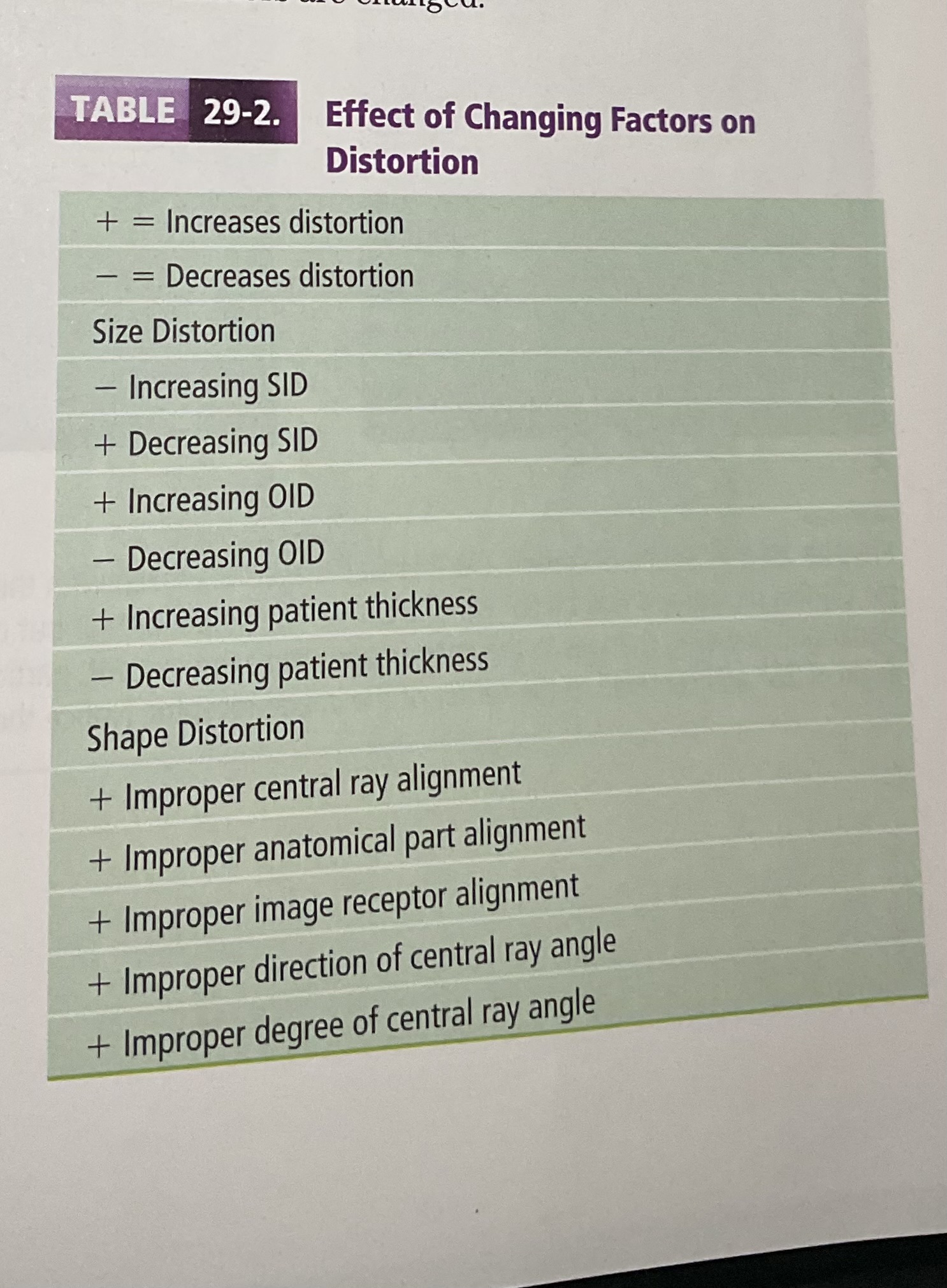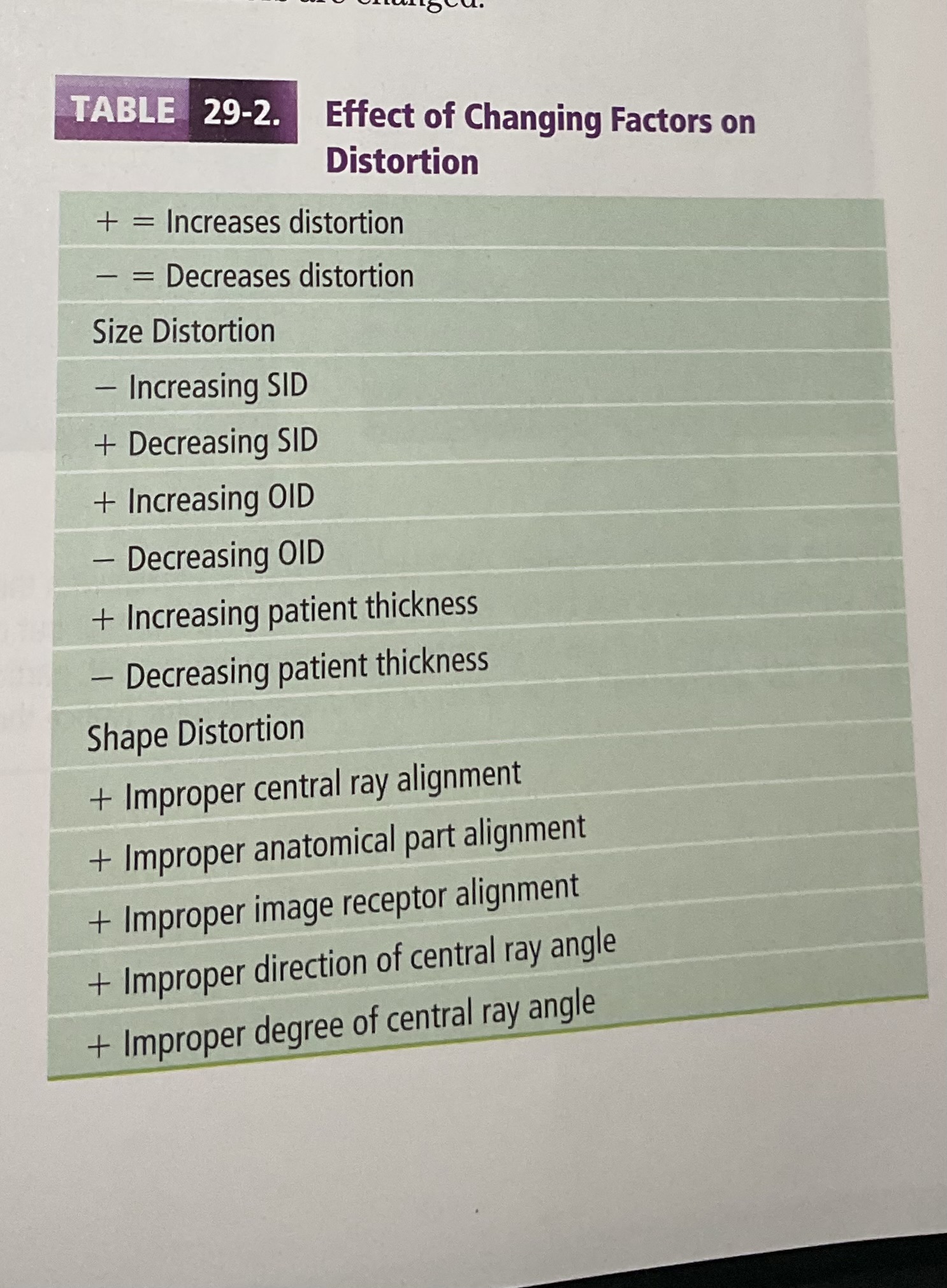CH 29 DISTORTION
1/20
There's no tags or description
Looks like no tags are added yet.
Name | Mastery | Learn | Test | Matching | Spaced |
|---|
No study sessions yet.
21 Terms
Distortion is the mis representation
misrepresentation of size or shape of the structures being examined can be classified as either
size or shaped distortion.
Distortion is controlled by
Source to image receptor SID and object to image receptor OID
Magnification size distortion is controlled by positioning, the body part and
Tube to maximize SID while minimizing OID
SID HAS A MAJOR EFFECT ON MAGNIFICATION , the greater SID the smaller?
Greater SID, The smaller the magnification because as SID increases
SID must be maximize to decrease
Must be maximized to decrease magnification.
For example; exams with body parts with large OID’s like Lateral C spine And chest
( use large oid)
OID must be minimized to _____
decrease magnification
For example; exams with large O IDs, like kidneys and chest achieve small O ID as possible
Size distortion or Magnification can be assessed by
Assessed by calculation of magnification factor.
Magnification factor is calculated by the M= SID/SOD
Shape distortion is the
Misrepresentation by the unequal magnification of the actual shape of the structure being examined.
either elongation, for shortening
elongation refers to
protects the object that it appears to be longer than it really is
occurs when the tube or image receptorr is a improperly aligned
foreshortening refers to
Refers to projecting an object to appear shorter than it actually is
Occurs only when the part is improperly aligned
Century away from the specified central rate entrance point is equivalent to
Is equivalent to angling the tube away from the perpendicular because the entire perspective of the anatomical part is distorted
The central rate is normally positioned
Positioned perpendicular to the anatomical part into the image interceptor
The below axis of the anatomical, part or object is intended to be positioned
Position perpendicular to the central ray & parallel to the image receptor
For shortening only occurs when there is
When there is poor alignment of the part
Elongation occurs only
Occurs when the poor alignment of the tube and or the Image receptor
Image perceptive is intended to be positioned
Position perpendicular to the central ray and parallel to the anatomical part.
Angulation refers to the direction.
Refers to the direction and degree of the tube moved from its original position, perpendicular to the image receptor.
The most common direction of tube angle is
Longitudinal angulations
Cephalic= Tube is angled towards the head
Caudad= tube is angled towards the feet
Degree refers to
Method of describing the exact amount of angulation and is usually stated as the angle between the central rate and the image of their plane from the standard preference point of perpendicularity.
Shape of distortion involves both elongation and for shortening
T or f
True

